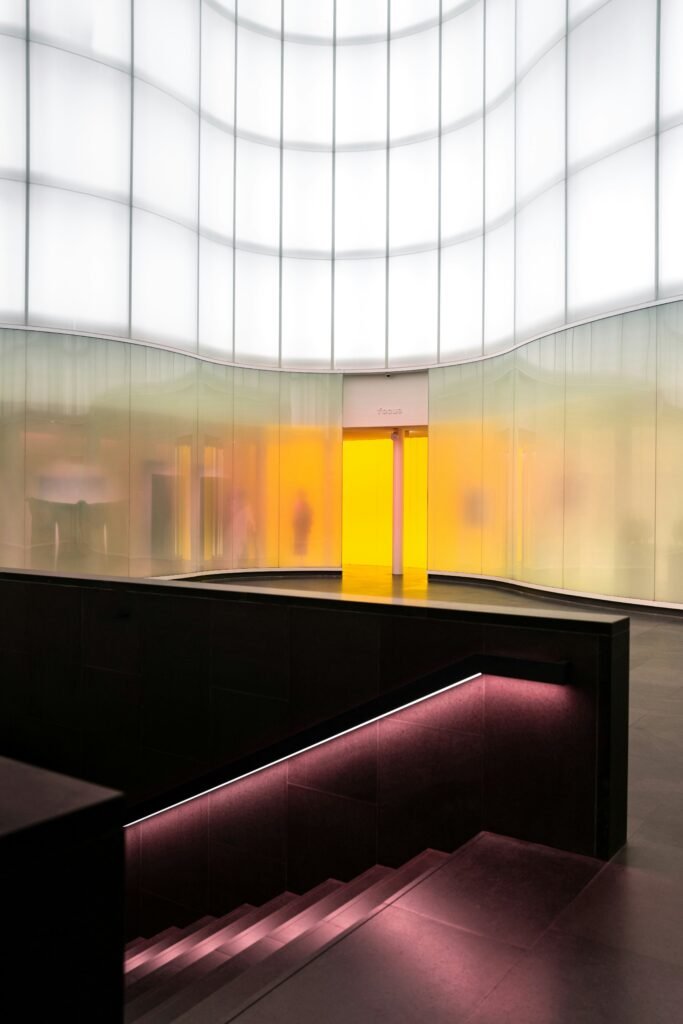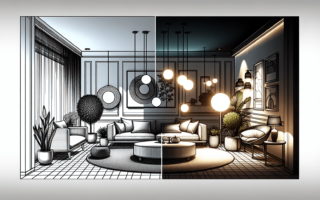Welcome to “Lighting the Way: Creating Depth with Multi-layered Lighting Design”! In this article, we will explore the concept of multi-layered lighting design and how it can transform the ambiance of a space. By incorporating various light sources at different levels, you can create depth, texture, and drama in your room. Whether you are looking to enhance the coziness of your living room or add a touch of elegance to your dining area, multi-layered lighting design is the key to achieving a well-balanced and visually appealing space. Get ready to illuminate your home in a whole new way! Have you ever walked into a room and instantly felt a certain ambiance or mood that was set by the lighting? Lighting plays a crucial role in creating the atmosphere of a space and can make a significant impact on how you feel while you are in it. If you want to learn more about how to take your lighting design to the next level and create depth in your space, then you’re in the right place. In this article, we will explore the concept of multi-layered lighting design and how you can use it to transform your space into a warm and inviting oasis.

Understanding Multi-Layered Lighting Design
When it comes to lighting design, one size does not fit all. Different types of lighting serve different purposes, and by combining them strategically, you can create a more visually appealing and functional space. Multi-layered lighting design involves using a combination of ambient, task, and accent lighting to achieve a balanced and harmonious lighting scheme.
Ambient Lighting
Ambient lighting, also known as general lighting, provides overall illumination to a room. This is the base layer of lighting that sets the tone for the space. It can come from ceiling-mounted fixtures, such as chandeliers, recessed lights, or track lighting. Ambient lighting should be soft and even, creating a warm and welcoming atmosphere.
When you enter a room, ambient lighting is the first thing you notice. It fills the space with light and sets the stage for the rest of your lighting design. Think of it as the foundation upon which you will build the rest of your lighting scheme.
Task Lighting
Task lighting is focused light that illuminates a specific area where tasks are performed. This type of lighting is essential for activities that require focused attention, such as reading, cooking, or working. Task lighting can come from desk lamps, under-cabinet lights, or pendant lights that are strategically placed to provide adequate light for the task at hand.
Task lighting helps you see clearly and perform tasks efficiently. By incorporating task lighting into your design, you can enhance the functionality of your space and make it more comfortable and practical to use.
Accent Lighting
Accent lighting is used to highlight specific objects, architectural features, or artwork in a space. This type of lighting adds depth and dimension to a room by creating contrast and drawing attention to certain elements. Accent lighting can come from track lights, wall sconces, or picture lights that are aimed at the focal points of the room.
Think of accent lighting as the finishing touch that brings your space to life. By strategically placing accent lights, you can create visual interest and add drama to your design.
Layering Light for Depth and Dimension
Now that you understand the different types of lighting, let’s dive into how you can layer them to create depth and dimension in your space.
Layer 1: Ambient Lighting
Start by establishing your ambient lighting layer. This will be the base layer of light that fills the room and creates a comfortable atmosphere. Choose fixtures that provide soft, diffused light and distribute it evenly throughout the space. Consider dimmable options that allow you to adjust the brightness to suit the mood or time of day.
Layer 2: Task Lighting
Next, add task lighting to areas where focused light is needed. Install task lights over workspaces, countertops, or reading nooks to ensure that tasks can be performed comfortably and efficiently. Task lighting should be brighter than ambient lighting to provide ample illumination for specific activities.
Layer 3: Accent Lighting
Finally, incorporate accent lighting to highlight architectural features, artwork, or decorative elements in the room. Use accent lights to create visual interest and draw the eye to focal points. Play with different angles and intensities to create shadows and highlights that add depth and dimension to your space.
By layering different types of lighting, you can create a dynamic and visually appealing environment that is both functional and beautiful. Each layer serves a specific purpose and together they work harmoniously to enhance the overall atmosphere of the room.

Choosing the Right Fixtures
When selecting fixtures for your multi-layered lighting design, consider the style of your space, the size of the room, and the activities that will take place in each area. Here are some tips for choosing the right fixtures for each layer of lighting:
Ambient Lighting Fixtures
- Chandeliers: Ideal for dining rooms, foyers, or larger spaces where a statement piece is needed.
- Recessed Lights: Great for providing seamless, overhead lighting without taking up visual space.
- Pendant Lights: Perfect for adding a decorative element and defining specific areas in the room.
Task Lighting Fixtures
- Desk Lamps: Useful for home offices, reading nooks, or bedside tables where focused light is needed.
- Under-Cabinet Lights: Essential for illuminating countertops in kitchens or workspaces.
- Pendant Lights: Functional and stylish options for providing task lighting over dining tables or kitchen islands.
Accent Lighting Fixtures
- Track Lights: Versatile fixtures that can be adjusted to highlight different objects or areas in the room.
- Wall Sconces: Elegant options for adding ambient and accent light to walls or hallways.
- Picture Lights: Perfect for illuminating artwork or decorative pieces and creating visual interest.
By choosing fixtures that complement each other and serve the specific purpose of each layer of lighting, you can create a cohesive and well-designed lighting scheme that enhances the beauty and functionality of your space.

Tips for Effective Multi-Layered Lighting Design
Creating a multi-layered lighting design may seem daunting, but with the right approach, you can achieve a beautifully lit space that is both inviting and practical. Here are some tips to help you create an effective multi-layered lighting design:
1. Plan Your Lighting Scheme
Before you start installing fixtures, take the time to plan out your lighting scheme. Consider the layout of the room, the activities that will take place in each area, and the mood you want to create. Make a lighting plan that outlines where each layer of lighting will be placed and how they will work together to achieve your desired effect.
2. Mix and Match Fixture Types
Don’t be afraid to mix and match different types of fixtures to create a layered look. Combining overhead lights with wall sconces, table lamps, and floor lamps can add depth and texture to your space. Experiment with different combinations until you find the right balance of light and shadow.
3. Use Dimmers for Flexibility
Consider installing dimmer switches for your ambient and task lighting fixtures. Dimmers allow you to adjust the brightness of the light to suit different activities or moods. You can dim the lights for a cozy movie night or brighten them for a lively dinner party. Dimmers give you flexibility and control over the lighting in your space.
4. Highlight Focal Points
Use accent lighting to draw attention to focal points in the room, such as artwork, architectural features, or decorative elements. By highlighting these areas with focused light, you can create visual interest and add drama to your design. Experiment with different angles and intensities to find the most flattering lighting for each focal point.
5. Layer Light Sources
To create depth and dimension in your space, layer light sources at different heights and levels. Combine overhead lights with wall lights, floor lamps, and table lamps to create a layered effect that adds visual interest. By varying the height and intensity of the light sources, you can create a dynamic and visually appealing environment.
6. Consider Color Temperature
When selecting light bulbs for your fixtures, pay attention to the color temperature of the light. Warm white light (around 2700-3000 Kelvin) is cozy and inviting, while cool white light (around 4000-5000 Kelvin) is bright and energizing. Consider the mood you want to create in each area of your space and choose bulbs with the appropriate color temperature to enhance the ambiance.

Conclusion
Creating depth with multi-layered lighting design is an art form that can transform your space into a warm and inviting oasis. By understanding the different types of lighting and how to layer them effectively, you can enhance the atmosphere and functionality of your room.
Whether you are designing a cozy living room, a functional kitchen, or a tranquil bedroom, incorporating ambient, task, and accent lighting can bring your space to life. With the right fixtures, a well-thought-out plan, and some creativity, you can create a beautifully lit environment that reflects your personality and style. So, go ahead and start experimenting with multi-layered lighting design – you’ll be amazed at the difference it can make in your space.



